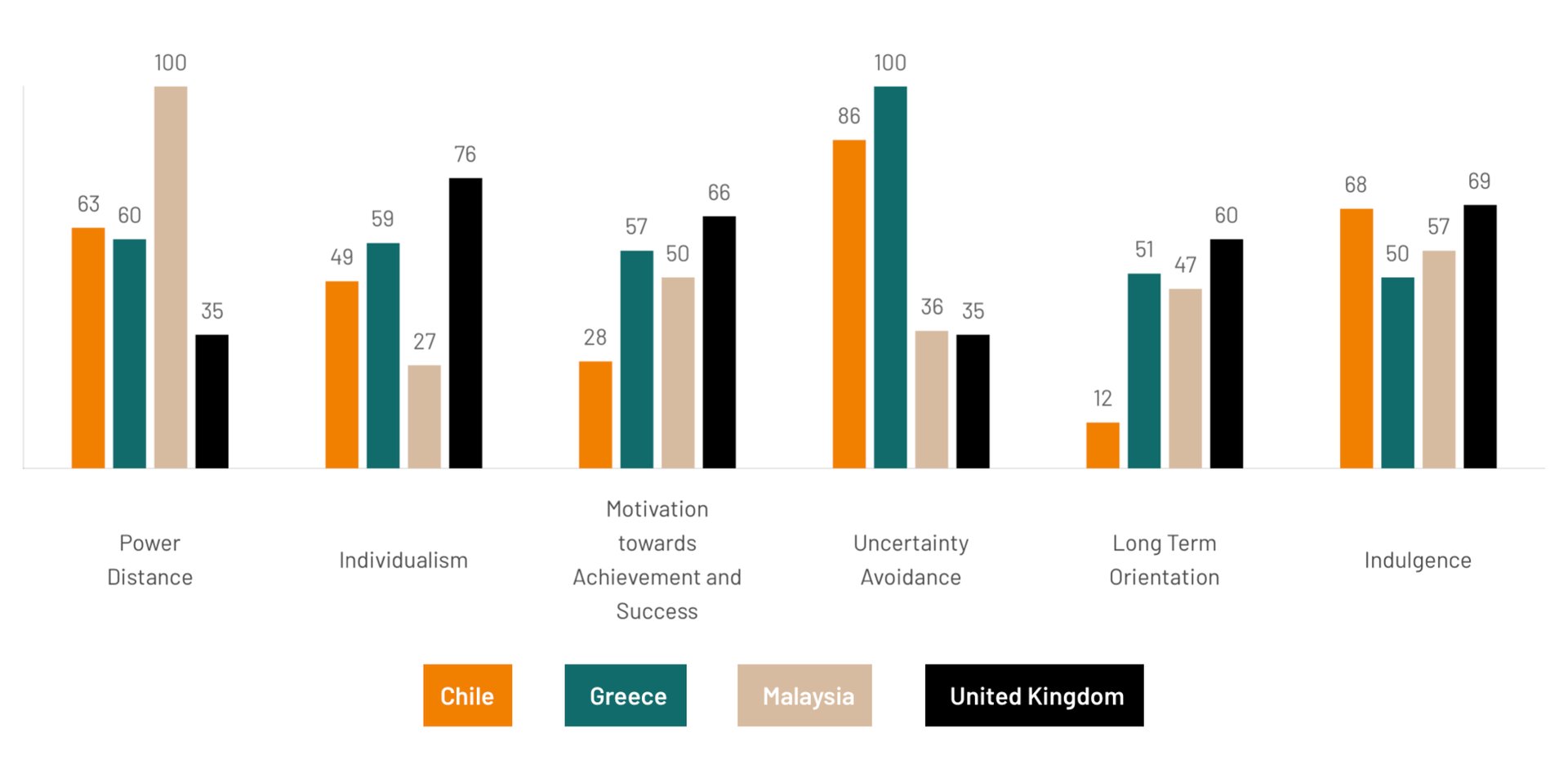- Hofstede's model is a way of understanding the culture of a country based on its cultural values
- It can help organisations improve communication and cooperation between people from different cultures
- It provides a framework for understanding how cultural differences can affect business dealings
- The Hofstede organisation uses surveys to generate scores for each country using six different variables
- These scores are then accessible to businesses to use in their decision-making process
- The tool is most useful when the scores of different countries are compared with each other
Diagram of Country Rankings Using Hofstede's Model

A comparison of cultures using Hofstede's model
(Source: Country Comparison Tool)
- Six different dimensions are used for comparison
- Each dimension is expressed on a scale that runs from 0 to 100
- If a score is under 50, the culture scores relatively low on that scale
- If any score is over 50, the culture scores high on that scale
An Explanation of Hofstede's Six Cultural Dimensions
Dimension
|
Explanation
|
Examples
|
Power Distance |
- Power Distance is defined as the extent to which the less powerful members of institutions and organisations within a country expect and accept that power is distributed unequally
|
- Low-scoring countries include Australia, the USA and Finland
- High-scoring countries include Mexico, Russia and Philippines
|
Individualism |
- The degree of interdependence a society maintains among its members
- In Individualist societies people are supposed to look after themselves and their direct family only
- In Collectivist societies people belong to 'in groups' that take care of them in exchange for loyalty
|
- Low-scoring (collectivist) countries include China, Pakistan and Malaysia
- High-scoring (individualist) countries include the UK, South Africa and Italy
|
Motivation Towards Success |
- A high score (Decisive) on this dimension indicates that the society will be driven by competition, achievement and success
- A low score (Consensus-oriented) on the dimension means that the dominant values in society are caring for others and quality of life
|
- Low-scoring countries include Norway, Portugal and Chile
- High-scoring countries include Germany, Japan and Australia
|
Uncertainty Avoidance |
- The extent to which a society tolerates or avoids uncertainty and ambiguity
- The extent to people feel threatened by unknown situations and have created beliefs and institutions that try to avoid these are reflected in this score
|
- Low-scoring (tolerant) countries include Sweden, Tunisia and Namibia
- High-scoring (avoiding) countries include Spain, Turkey and Ecuador
|
Long-term Orientation |
- The extent to which society has to maintain some links with its own past while dealing with the challenges of the present and future
- Low score countries prefer to maintain traditions and norms
- Those with high scores encourage modern education as a way to prepare for the future
|
- Low-scoring (long-term) countries include Ukraine, Latvia and Norway
- High-scoring (short-term) countries include Venezuela, Morocco and Saudi Arabia
|
Indulgence |
- The extent to which people try to control their desires and impulses based on the way they were raised
- These are defined as restrained and indulgent societies
|
- Low-scoring (restrained) countries include Poland, Indonesia and Estonia
- High-scoring (indulgent) countries include Argentina, Ireland and New Zealand
|

